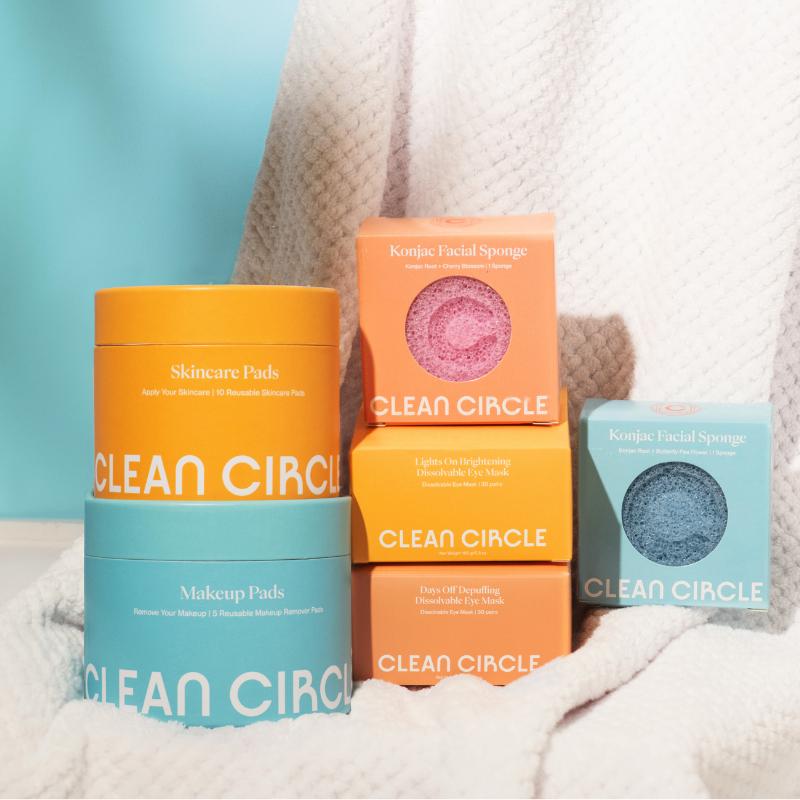The Science Behind Clean Beauty: Understanding Ingredients and Labels
Share
The Science Behind Clean Beauty: Understanding Ingredients and Labels
Clean beauty is more than just a trend; it's a movement driven by a growing awareness of what we put on our skin. For millennial women who care about their health and the environment, understanding the science behind clean beauty is crucial. This blog will delve into the importance of clean beauty, decode common ingredients, and help you navigate labels to make informed choices.
What is Clean Beauty?
Defining Clean Beauty
Clean beauty refers to products formulated without harmful chemicals and toxins. These products are typically free from parabens, sulfates, phthalates, synthetic fragrances, and other potentially harmful ingredients. Clean beauty emphasizes safety, transparency, and the use of natural or organic ingredients.
Why Clean Beauty Matters
Millennial women are increasingly concerned about the long-term effects of chemical-laden beauty products. Clean beauty offers a safer alternative, reducing the risk of skin irritation, allergies, and potential health issues. Additionally, clean beauty brands often prioritize sustainable and ethical practices, aligning with the values of environmentally conscious consumers.
The Science of Clean Beauty Ingredients
Common Harmful Ingredients to Avoid
- Parabens
- What They Are: Preservatives used to extend the shelf life of products.
- Why Avoid Them: Linked to hormonal disruptions and potential carcinogenic effects.
- Sulfates
- What They Are: Detergents and foaming agents found in shampoos and cleansers.
- Why Avoid Them: Can cause skin irritation and strip natural oils from the skin and hair.
- Phthalates
- What They Are: Chemicals used to increase the flexibility and longevity of plastics in cosmetics.
- Why Avoid Them: Associated with reproductive and developmental issues.
- Synthetic Fragrances
- What They Are: Chemical compounds used to create fragrance in products.
- Why Avoid Them: Can cause allergies, respiratory issues, and skin irritation.
- Formaldehyde
- What It Is: A preservative that prevents bacterial growth.
- Why Avoid It: Known carcinogen that can cause skin sensitization and respiratory issues.
Beneficial Ingredients in Clean Beauty
- Hyaluronic Acid
- What It Is: A natural substance that hydrates and plumps the skin.
- Benefits: Retains moisture, reduces the appearance of fine lines, and improves skin texture.
- Vitamin C
- What It Is: An antioxidant that brightens the skin and promotes collagen production.
- Benefits: Reduces hyperpigmentation, protects against UV damage, and enhances skin radiance.
- Aloe Vera
- What It Is: A plant extract known for its soothing properties.
- Benefits: Calms inflammation, hydrates, and heals the skin.
- Green Tea Extract
- What It Is: A powerful antioxidant derived from green tea leaves.
- Benefits: Fights free radicals, reduces redness, and improves skin elasticity.
- Argan Oil
- What It Is: An oil extracted from the kernels of the argan tree.
- Benefits: Moisturizes, nourishes, and protects the skin and hair.
Understanding Clean Beauty Labels
Decoding Labels
- Organic
- Meaning: Contains ingredients grown without synthetic pesticides or fertilizers.
- Certification: Look for certifications from organizations like USDA Organic or Ecocert.
- Natural
- Meaning: Ingredients derived from natural sources with minimal processing.
- Caution: Not all natural products are safe; some natural ingredients can cause irritation.
- Non-Toxic
- Meaning: Free from ingredients that are harmful to human health.
- Verification: Research the brand's safety standards and ingredient list.
- Cruelty-Free
- Meaning: Products are not tested on animals.
- Certification: Look for logos from Leaping Bunny or PETA.
- Vegan
- Meaning: Free from animal-derived ingredients.
- Label Check: Ensure the product also aligns with clean beauty standards.
Third-Party Certifications
Certifications from third-party organizations can provide assurance about the claims made by clean beauty products. Some of the key certifications to look for include:
- USDA Organic
- Ecocert
- COSMOS Standard
- Leaping Bunny
- EWG Verified
Making the Switch to Clean Beauty
Assess Your Current Products
Begin by evaluating the products you currently use. Check the ingredient lists for harmful chemicals and prioritize replacing those items with clean alternatives.
Start with Essentials
Transition to clean beauty by starting with essential products like cleansers, moisturizers, and sunscreens. These products have the most direct impact on your skin's health.
Research Brands
Look for reputable clean beauty brands that align with your values. Brands such as Beautycounter, Tata Harper, Ilia Beauty, and Drunk Elephant are known for their commitment to clean beauty standards.
Read Reviews and Ratings
Customer reviews and ratings can provide valuable insights into the effectiveness and safety of clean beauty products. Look for feedback from other users with similar skin types and concerns.
DIY Clean Beauty
For those who enjoy a hands-on approach, consider making your own beauty products using simple, natural ingredients. DIY recipes for face masks, scrubs, and hair treatments can be both fun and effective.
The science behind clean beauty is rooted in the use of safe, natural ingredients and a commitment to transparency and sustainability. For millennial women who care about their health and the environment, understanding clean beauty ingredients and labels is essential for making informed choices. By prioritizing clean beauty, you can enhance your skincare routine, support ethical brands, and contribute to a healthier planet. Embrace the clean beauty movement and experience the benefits of a more natural and sustainable approach to skincare.
By incorporating these tips and understanding the science behind clean beauty, millennial women can confidently navigate the world of skincare and cosmetics, ensuring they make choices that benefit both their skin and the environment.

